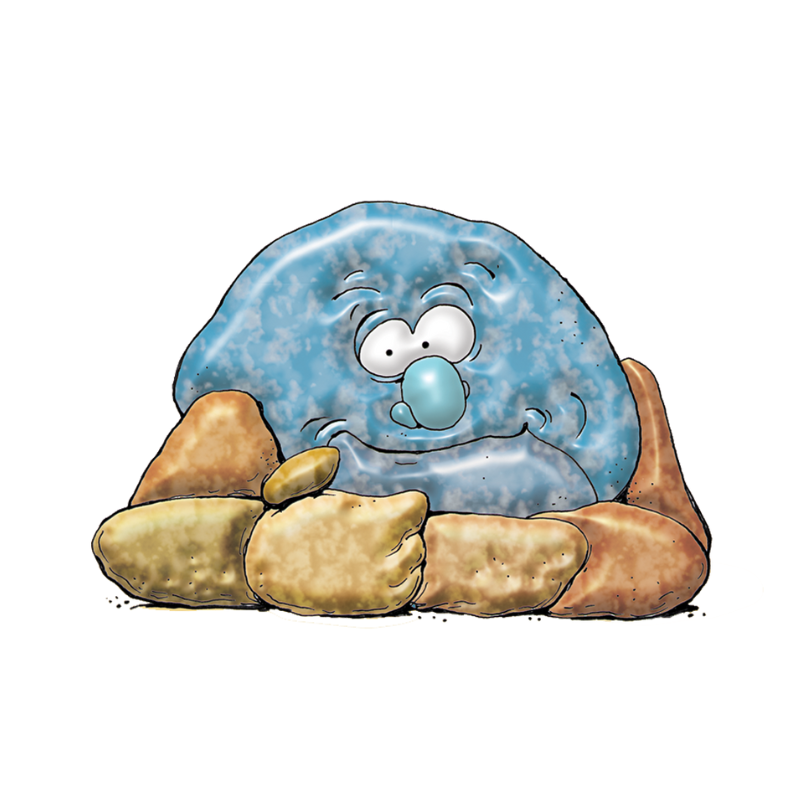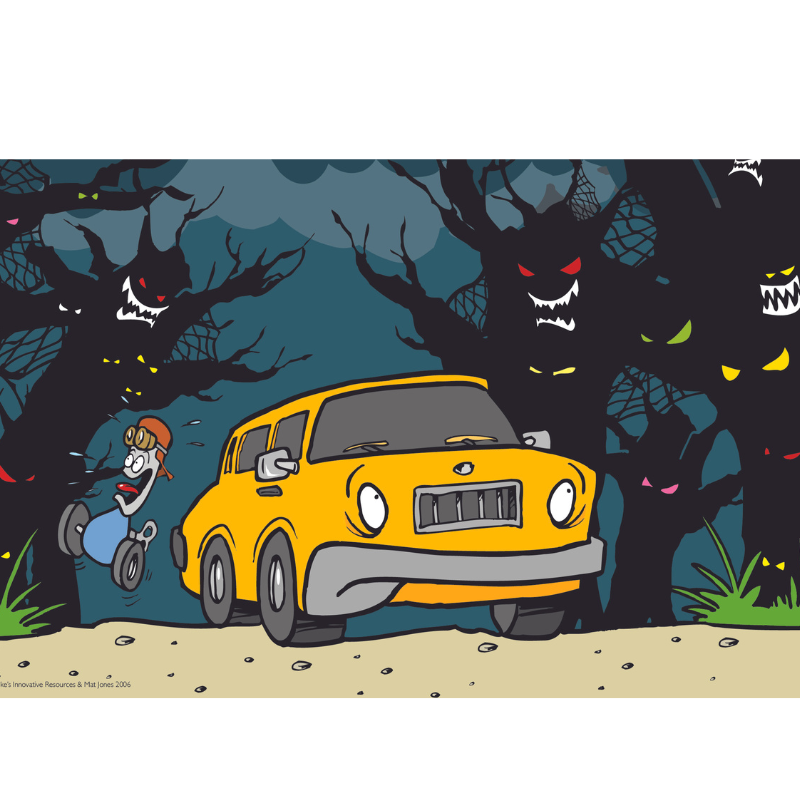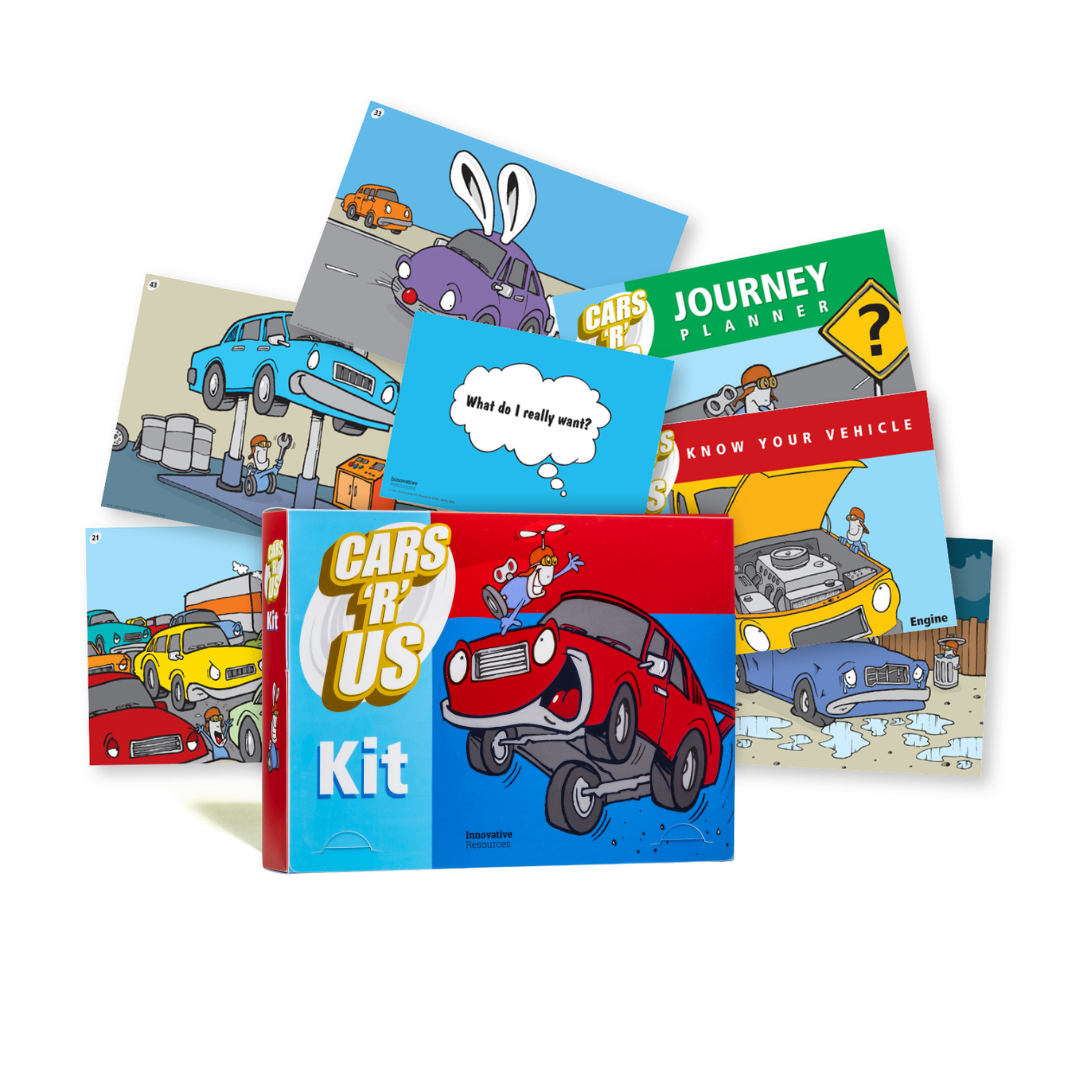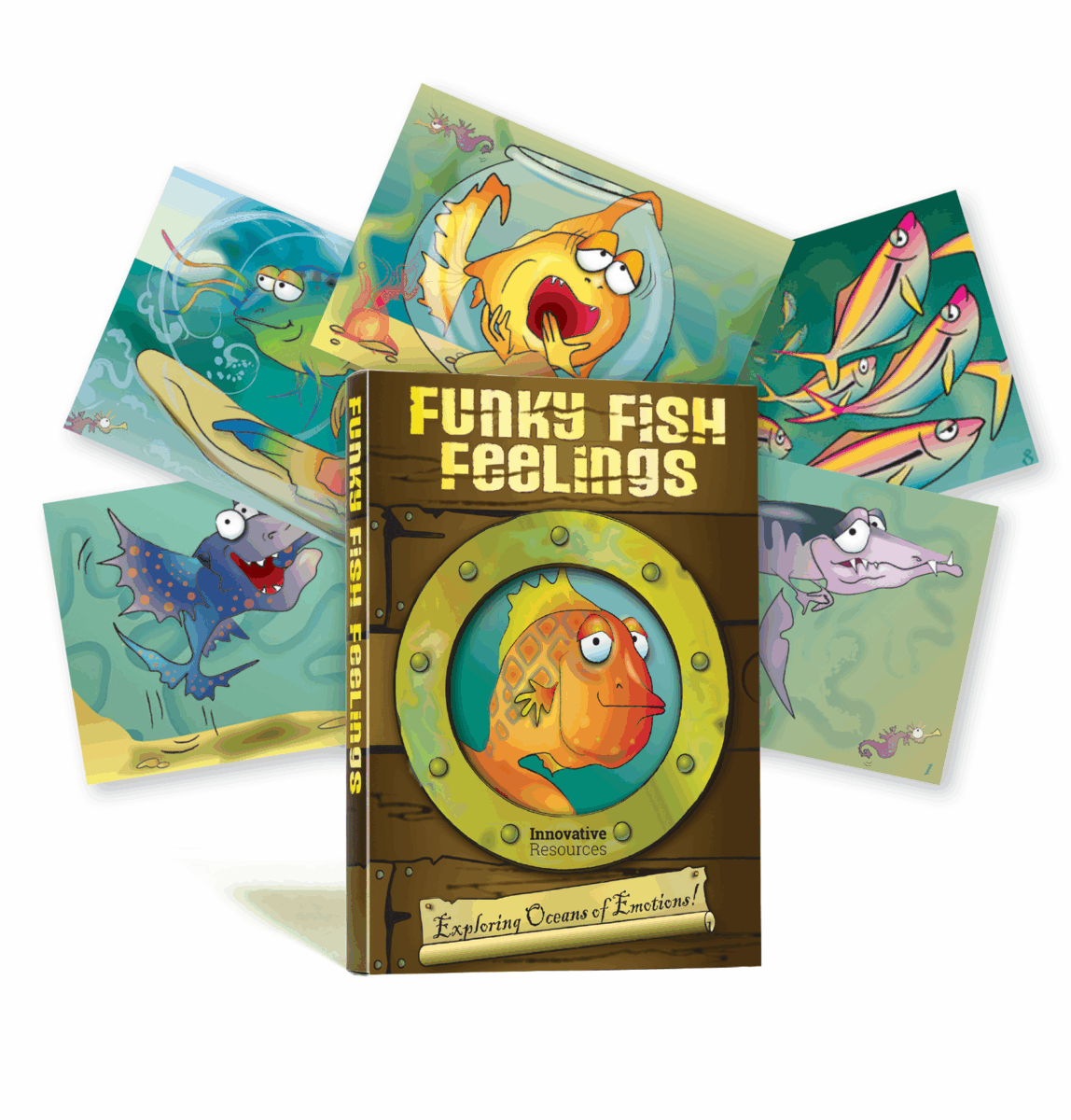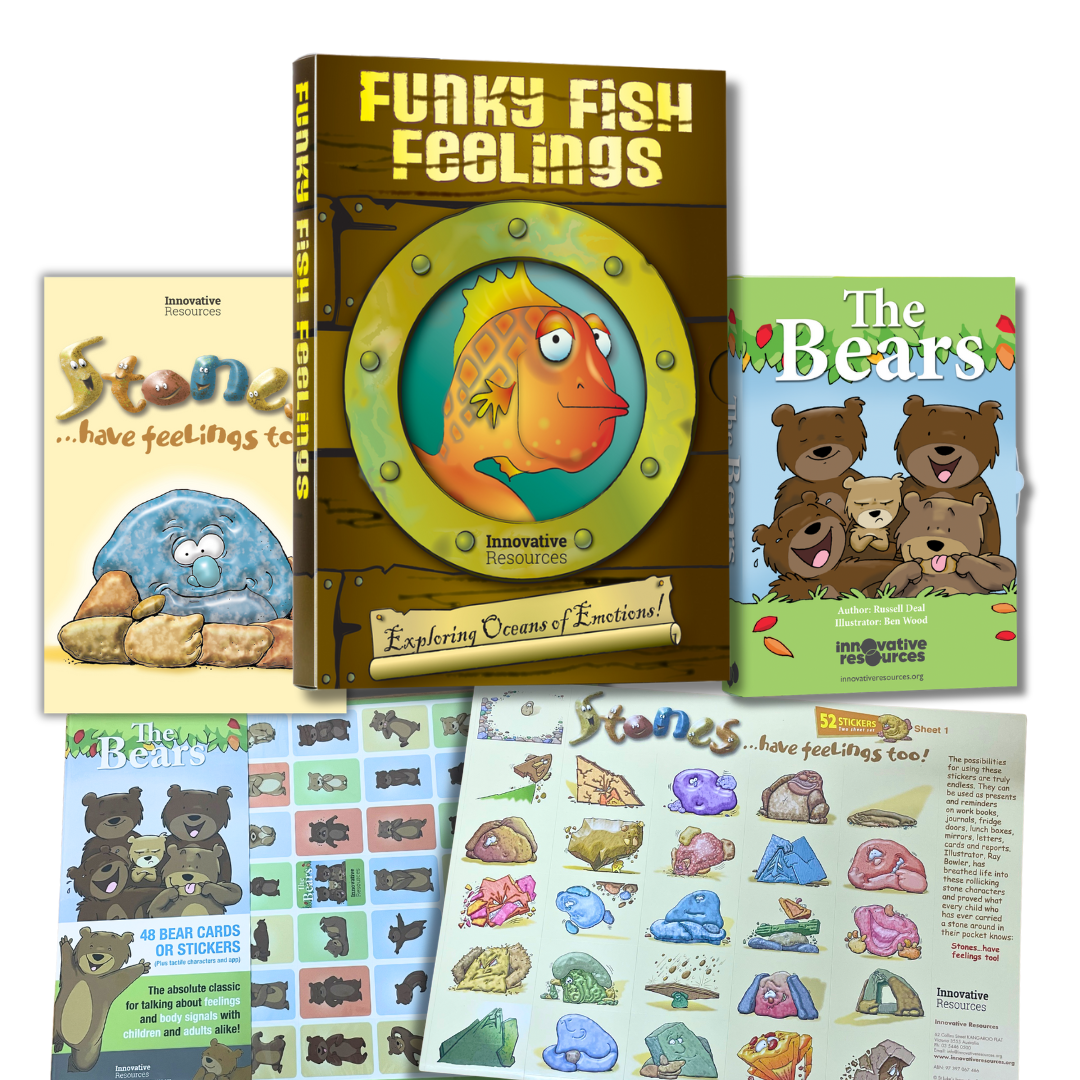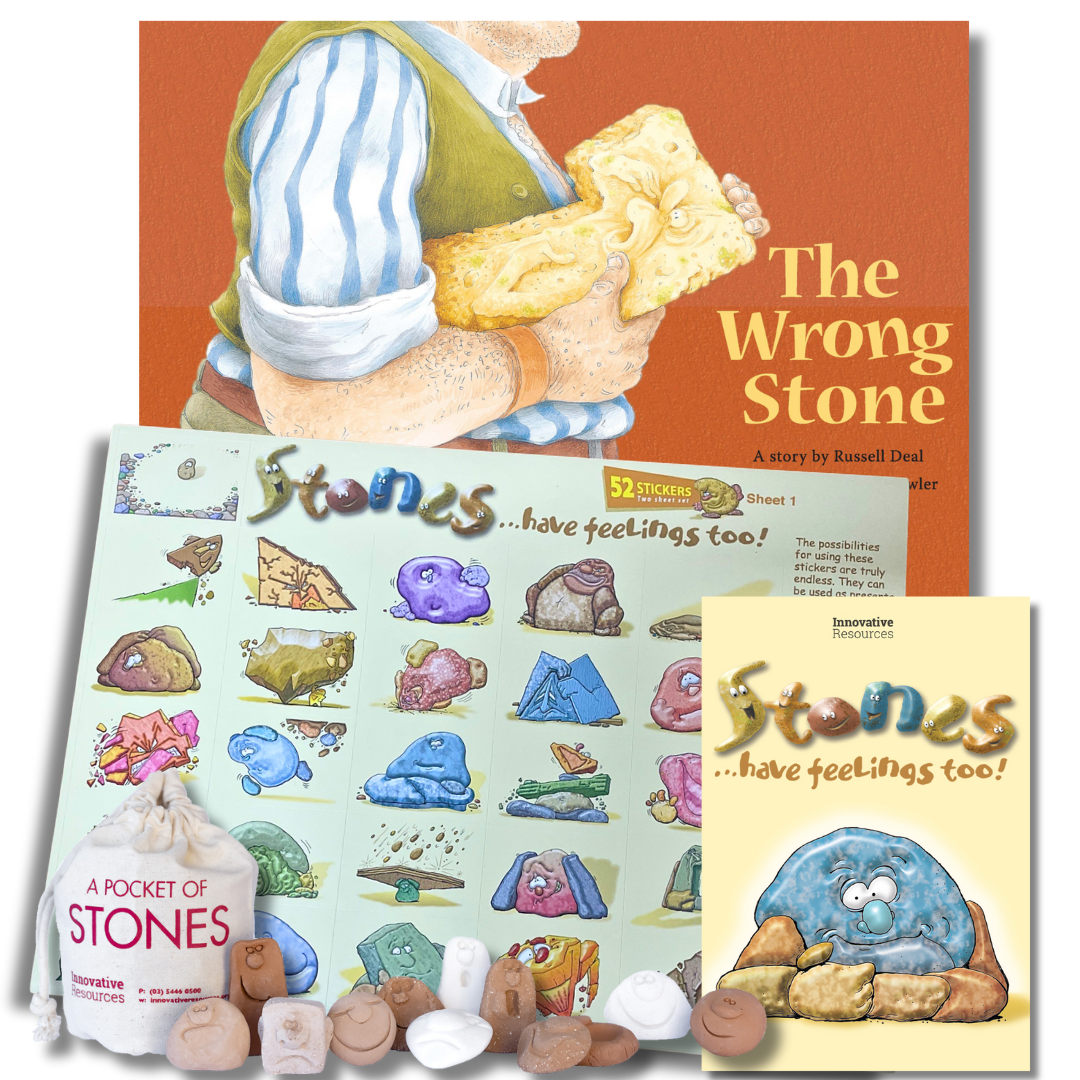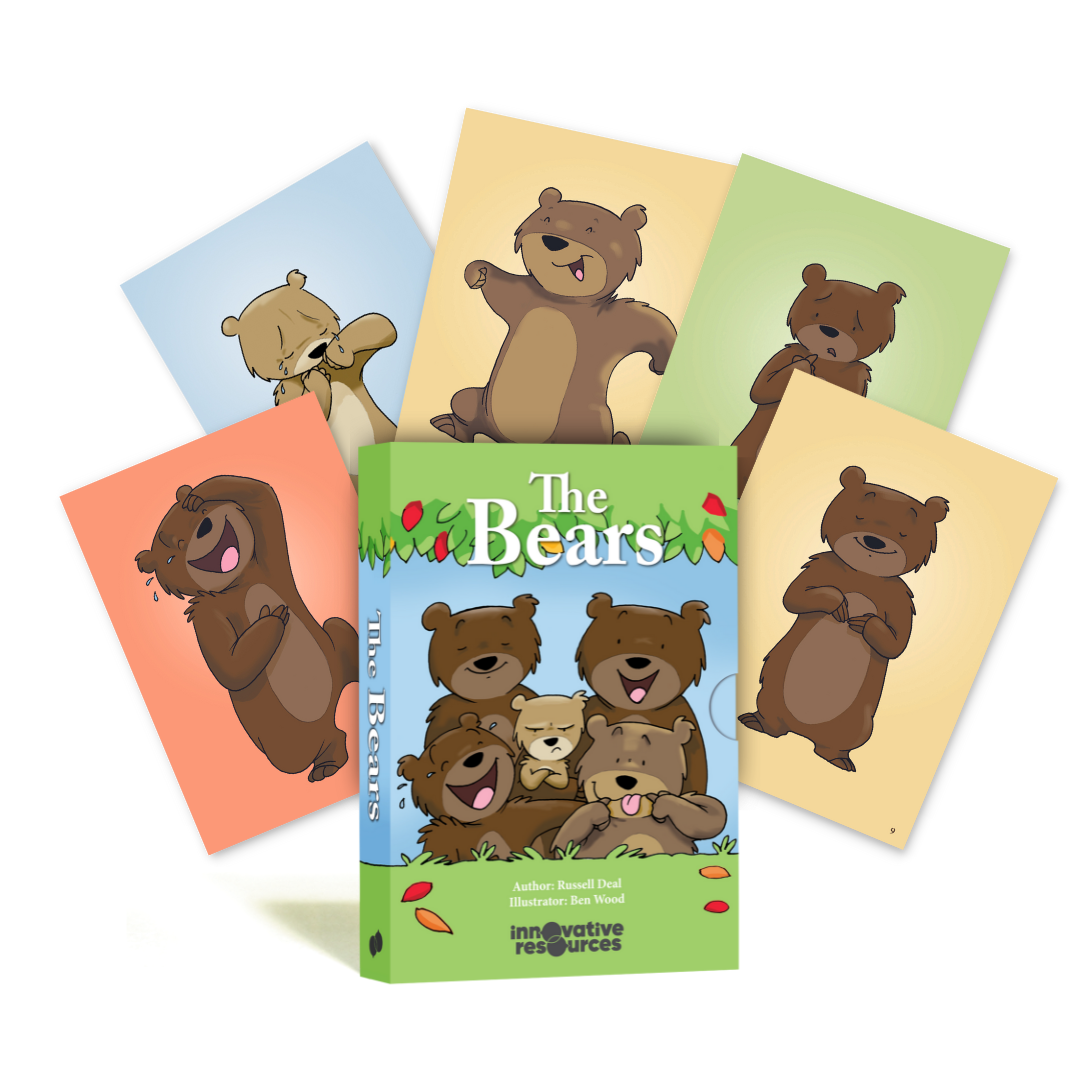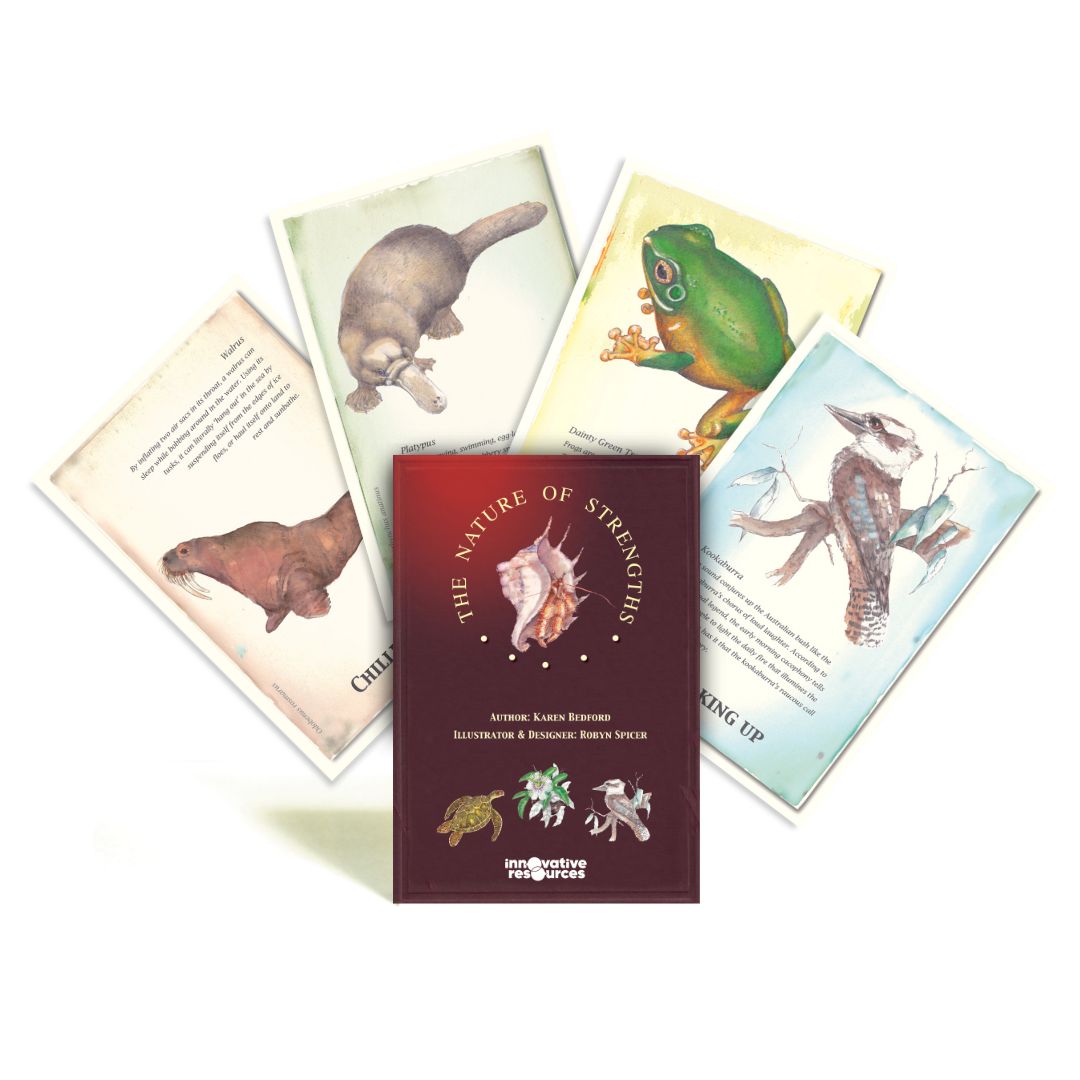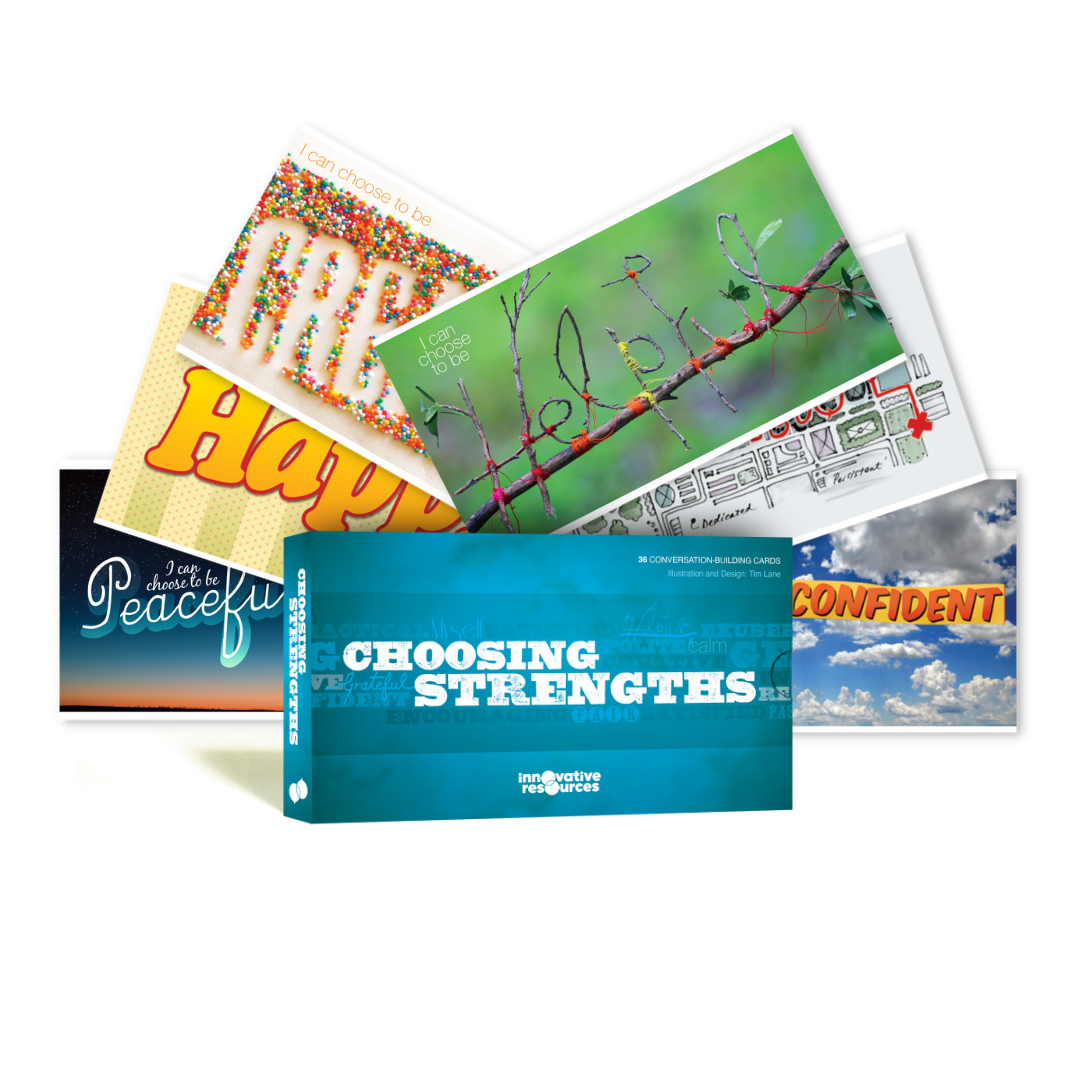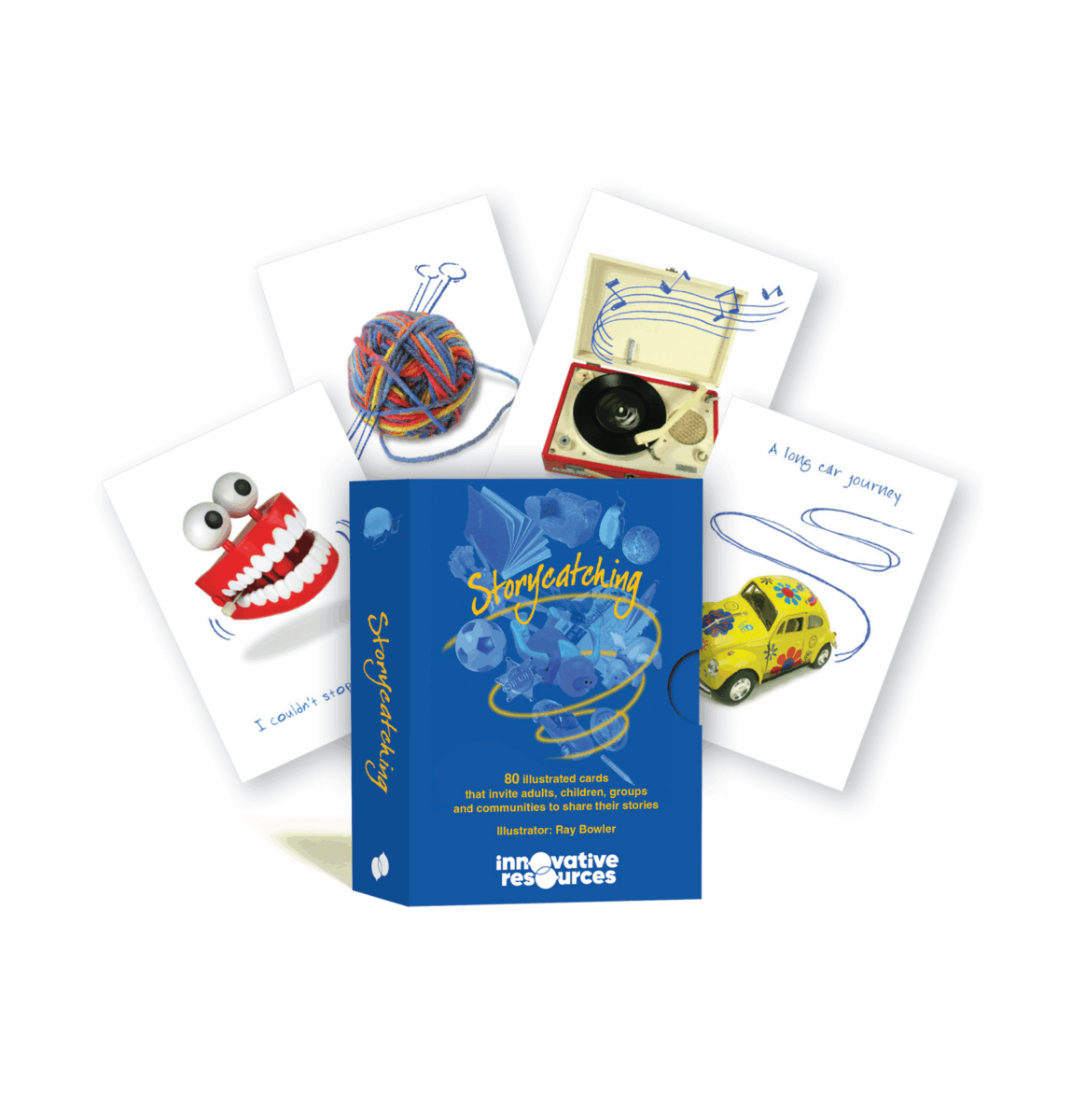





card sets
Stones …have feelings too! cards
Product Code: 3900
$79.95 inc. GST
build emotional literacy by helping people of all ages name, share, and reframe their feelings
199 in stock
Product Overview
Stones …have feelings too! is a playful yet powerful set of 52 cards designed to help children and adults build a vocabulary of emotions. Each card features a quirky stone character expressing a different feeling, with three words on the reverse to spark interpretation, reflection, and conversation.
Perfect for classrooms, counselling, family settings, and community groups, this resource helps people explore feelings, strengthen empathy, and develop resilience in a safe and engaging way.
Every set comes with bonus access to the Stones Digital Toolbox – a digital version of the cards and booklet, plus an evolving collection of blogs, videos, and activities to expand your practice.
What's Included?
- 52 laminated, full-colour cards (150 x 100 mm) featuring stone characters
- 44-page digital booklet with activity ideas and conversation prompts
- Sturdy storage box
BONUS: Free access to the Stones …have feelings too! Digital Toolbox
- Digital cards and booklet
- Ongoing access to blogs, card hacks, ideas and more
To use the digital toolbox, simply create a customer account. All digital products follow our Digital Usage Policy – see Copyright and Digital Usage for details.
How to Use
- In classrooms: Build emotional literacy and help children identify and express feelings.
- In counselling or group work: Explore complex emotions safely and creatively.
- At home: Encourage family conversations about daily experiences and moods.
- In creative learning: Use cards as prompts for storytelling, role-play, or drama activities.
For more inspiration, explore our Ideas Bank.
Suitable for
This resource is designed for people working in roles that support others, including:
- Early years practitioners
- Educators
- Counsellors, psychologists and social workers
testimonials
- Discover what makes our products a favourite!

